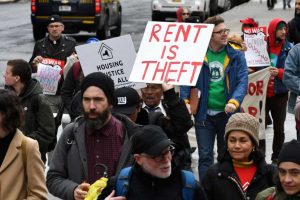 A recent blog post discussed sweeping changes to New York State’s regulations for rental units. These changes were recently passed by the state legislature, and signed into law by Governor Cuomo. While a full discussion of the new law is beyond the scope of this post, suffice it to say that the law makes it more difficult for landlords to remove apartments from rent stabilization, as well as removing the right of a landlord to increase the regulated rent after a tenant vacates and a new tenant moves into the unit.
A recent blog post discussed sweeping changes to New York State’s regulations for rental units. These changes were recently passed by the state legislature, and signed into law by Governor Cuomo. While a full discussion of the new law is beyond the scope of this post, suffice it to say that the law makes it more difficult for landlords to remove apartments from rent stabilization, as well as removing the right of a landlord to increase the regulated rent after a tenant vacates and a new tenant moves into the unit.
One effect of this change is to remove the incentive for a landlord to “buy out” a rent regulated tenant. Prior blog posts have discussed transactions where a landlord would pay a tenant a significant sum of money to vacate a rent regulated apartment. The reason for these transactions is that the landlord would then be permitted to significantly increase the rent for a new tenant, once the last tenant vacated. Under the new regulations, the landlord would not be permitted the large “vacancy increase” that was allowed previously. Therefore, landlords no longer would have an incentive to pay an existing tenant to move out, because the regulated rent would remain the same for a new tenant.
Landlords were not expecting the new regulations, as they were introduced very late in the legislative session. The new regulations also make it more difficult to evict tenants who do not pay their rent. As tenant-favorable laws will always be easier to pass in large cities, due to the simple fact that many tenants vote, and they are always more numerous than landlords, the question becomes whether these rent regulations can pass muster under the United States Constitution.
 New York Real Estate Lawyers Blog
New York Real Estate Lawyers Blog










